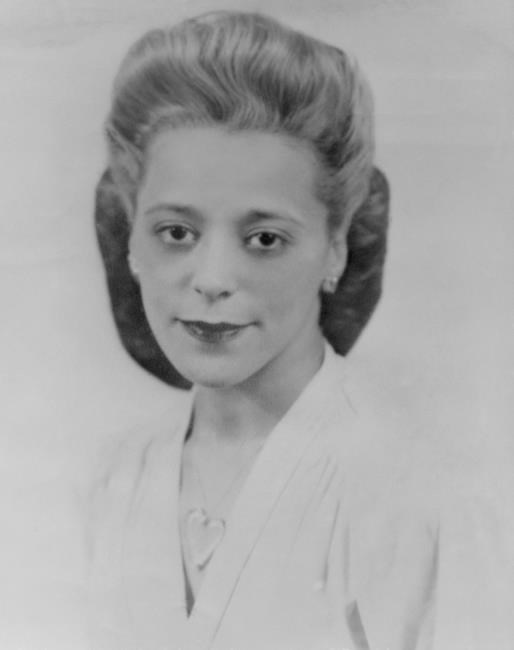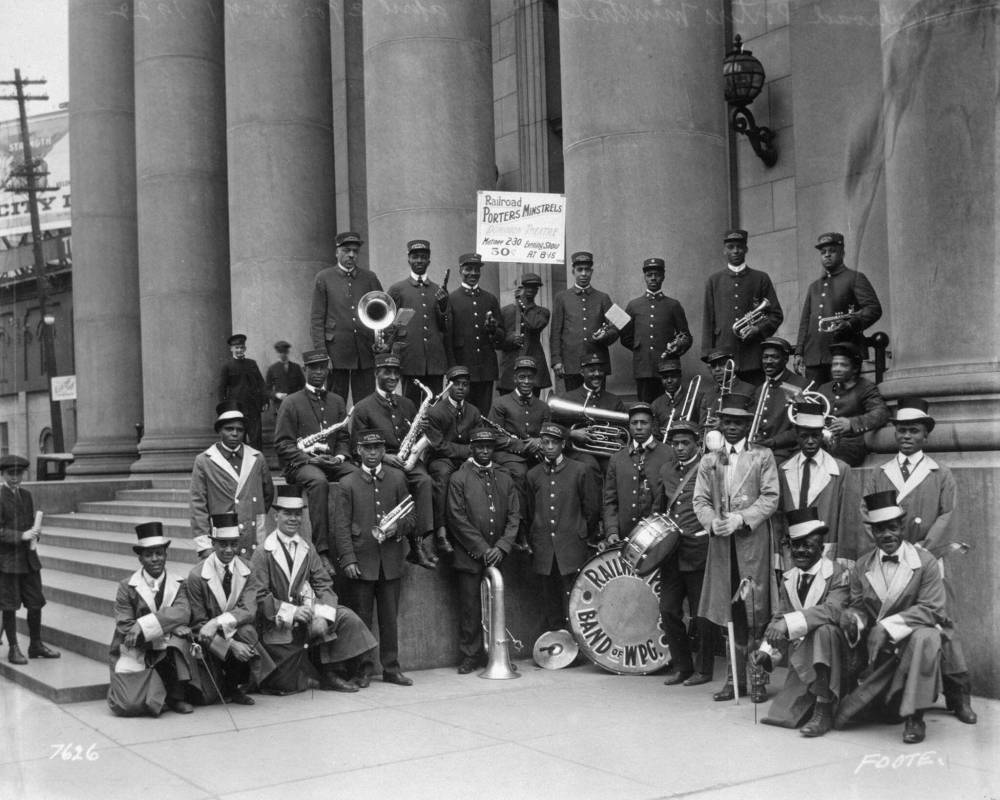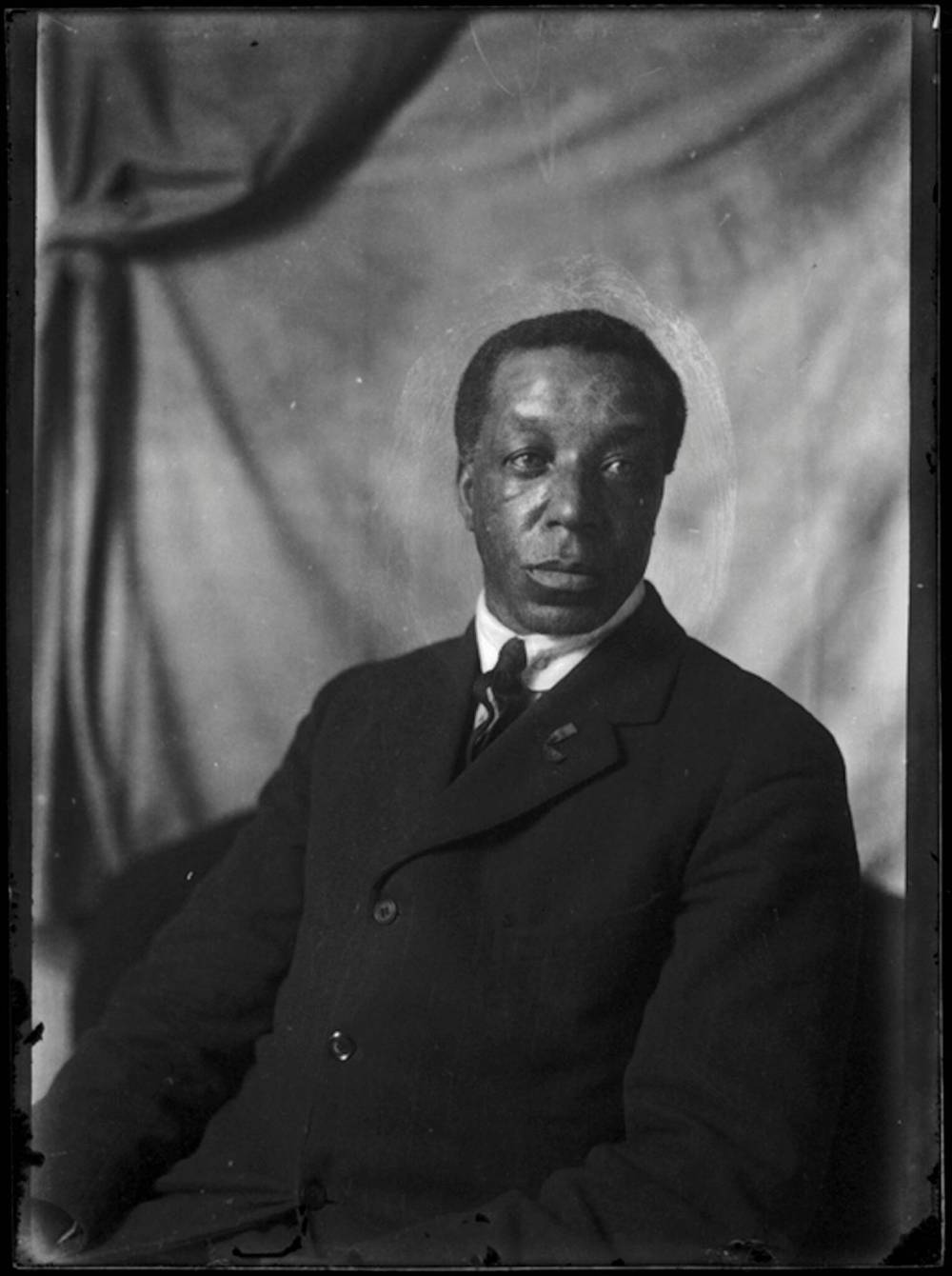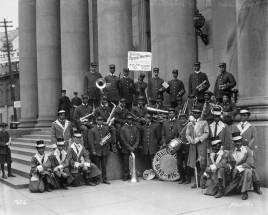Necessary lesson Online program introduces students to Black Canadian history that’s missing from school curriculum
Read this article for free:
or
Already have an account? Log in here »
To continue reading, please subscribe:
Monthly Digital Subscription
$0 for the first 4 weeks*
- Enjoy unlimited reading on winnipegfreepress.com
- Read the E-Edition, our digital replica newspaper
- Access News Break, our award-winning app
- Play interactive puzzles
*No charge for 4 weeks then price increases to the regular rate of $19.00 plus GST every four weeks. Offer available to new and qualified returning subscribers only. Cancel any time.
Monthly Digital Subscription
$4.75/week*
- Enjoy unlimited reading on winnipegfreepress.com
- Read the E-Edition, our digital replica newspaper
- Access News Break, our award-winning app
- Play interactive puzzles
*Billed as $19 plus GST every four weeks. Cancel any time.
To continue reading, please subscribe:
Add Free Press access to your Brandon Sun subscription for only an additional
$1 for the first 4 weeks*
*Your next subscription payment will increase by $1.00 and you will be charged $16.99 plus GST for four weeks. After four weeks, your payment will increase to $23.99 plus GST every four weeks.
Read unlimited articles for free today:
or
Already have an account? Log in here »
Hey there, time traveller!
This article was published 01/02/2022 (1404 days ago), so information in it may no longer be current.
A virtual school program is revealing stories that have gone unheard for generations.
Andre Sheppard, who is a presenter of the Community Voices Series project, says the program — created by the Manitoba Museum and Black History Manitoba and aimed at grade 5 and 6 students — fills historical gaps in what schoolchildren learn about the country and province they live in.
“The main reason for the history lesson is because there is nothing in the school curriculum, anywhere in Canada, about Canadian Black history,” he says.
Sheppard, a member of Black History Manitoba’s celebration committee, grew up in Black communities and neighbourhoods in and around the Nova Scotia cities of Halifax and Dartmouth.
He says historic events happened just around the corner from where he lived but remained a mystery to him until much later in life.

“I never heard about Viola Desmond until I was an adult,” he says of the woman who was jailed for challenging racial-segregation laws in Nova Scotia in 1946 and whose likeness began adorning Canada’s 10-dollar bill in 2018. “New Glasgow, where she was put in jail, New Glasgow is where my family is from.”
Sheppard served with the Royal Canadian Navy for 36 years, the latter of those as a military recruiter in Winnipeg. School visits were often disappointing.
“I noticed in all the schools I went to in February, all their Black History Month stuff was about Americans, nothing about Canadians at all,” he says, adding that led him to joining Black History Manitoba’s efforts.
Sheppard, along with Anya Moodie-Foster, the learning and engagement supervisor with the Manitoba Museum, began sharing these unfamiliar stories via webinars presented to individual classes across Manitoba last year.
“I noticed in all the schools I went to in February, all their Black History Month stuff was about Americans, nothing about Canadians at all.” – Andre Sheppard
For Black History Month, the presentation is moving to Zoom, where hopes are to have up to 2,000 students take part in a collective viewing of the webinar.
The program has also been introduced to Ontario, and there are plans to take it to schools across Western Canada in the future.
The lesson will be offered to the general public on Feb. 19 when the museum presents the Community Voices Series on Zoom and Facebook Live. People can register online at the Manitoba Museum link.
The online lesson begins with the first Black man who arrived in Canada, and talks about Black members of the United Empire Loyalists who moved to Canada after the U.S. Revolutionary War in the late 1700s.

”We look at a whole variety of Black Canadians, inventors, politicians, athletes and community leaders,” says Moodie-Foster. “We look at some of the challenges that the Black community (has faced), horrible, racist things that have happened in our history.”
From a Manitoba perspective, the lesson focuses on role models, people such as John Robinson, a Black railway porter who in 1917 formed the Order of Sleeping Car Porters after being denied membership by the Canadian Brotherhood of Railway Employees, an all-white union. His story is also presented in the museum’s Winnipeg Gallery.
Families of those porters helped form the Pilgrim Baptist Church, the oldest Black church in Manitoba, and their stories, passed from one generation to the next, are part of the virtual lesson.
”That’s a lot of reaching out and researching to the different members of the community,” Sheppard says. “Two of my great-uncles were porters, and one of the older guys here was also a porter at the same time.”

The lesson also introduces viewers to William Beal, who settled in the Swan River valley in western Manitoba in 1906 after moving from Minneapolis. The museum describes him as “Renaissance Man of the North” in its Parklands Gallery, owing to his many skills and interests.
Beal was a photographer and took many portraits of neighbouring settlers; he was also a steam engineer who oversaw logging operations. He formed a literary society, helped doctors administer vaccines during the Spanish flu epidemic in 1918 and 1919, and served as a school trustee for three decades.
“It not only features him as a really interesting person, but also shares some of his photographs, which really tells a lot of community life in the Swan River area in the early 20th century,” Moodie-Foster says.
While the lesson mentions subjects such as slavery in Canada, its virtual aspect doesn’t allow for question-and-answer sessions that might address more contentious and contemporary subjects such as racial discrimination and the Black Lives Matter movement.
“We don’t get heavy into the discussion because for them it’s more a history lesson.” – Andre Sheppard
“We don’t get heavy into the discussion because for them it’s more a history lesson. We don’t see (the students); they see us doing a presentation,” Sheppard says. “After the presentation, or before, (teachers) have stuff to discuss with the students that goes along with the presentations.”
The navy transferred Sheppard to Winnipeg in 1996 and made the move permanent in 2006, and he keeps finding historic surprises around every corner.
”I did 36 years in the navy, and it took me to move to Manitoba and start with the presentations to find out that the first Black man to join the Royal Canadian Navy joined in Winnipeg,” he says of Percy Haynes, who was also a boxer, restaurateur and musician.
“To learn that, and then to keep learning more and more stuff I didn’t learn growing up Black, it’s great to be able to pass on.”
Alan.Small@winnipegfreepress.com
Twitter: @AlanDSmall
Manitoba Museum opens Thursday
The Manitoba Museum will soon be back in business.
The historical and cultural look at the province reopens Thursday at 11 a.m., the first time since Dec. 23 after positive cases of COVID-19 forced it to scrap plans for a Boxing Day opening. It remained closed throughout January.
The museum’s Science Gallery and Planetarium will open Saturday. The museum will be open Thursday to Sundays 11 a.m. to 5 p.m. until further notice.
“I know that people have mixed feelings about this blizzard. I feel like its on our side. What better thing to do than to spend the day indoors?” Dorota Blumczyńska, the museum’s executive director, says with a chuckle.
Blumczyńska was among those who came down with the virus during the holiday break, but she’s back at the museum, co-ordinating reopening plans after spending two weeks at home in bed, suffering from its symptoms.
“I have to say that there are little bits of lingering impact,” she says. “Unlike before the bout, when I could climb a good set of stairs without getting winded, I find myself more fatigued far more quickly.”

Alan Small has been a journalist at the Free Press for more than 22 years in a variety of roles, the latest being a reporter in the Arts and Life section.
Our newsroom depends on a growing audience of readers to power our journalism. If you are not a paid reader, please consider becoming a subscriber.
Our newsroom depends on its audience of readers to power our journalism. Thank you for your support.
History
Updated on Thursday, February 3, 2022 11:38 AM CST: Adds photo credit








